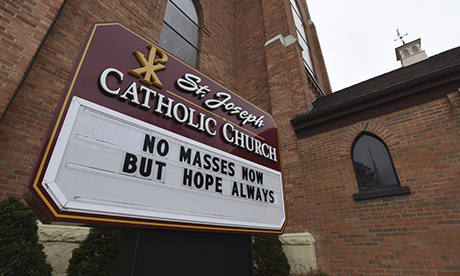A new, extensive multifaith study predicts that 30% of US religious congregations won’t survive the next 20 years due to a dramatic reduction in attendance.
A survey of 15,278 congregations in 80 Christian, Muslim, Jewish and Ba’hai denominations found that large congregations continued to grow.
In contrast, smaller congregations shrank in 2020, according to the Hartford Institute for Religion Research study.
“When you consider that many of those smaller congregations are rapidly ageing, unless something dramatic happens that brings young people into them, it’s likely 30% of them won’t survive the next 20 years,” said Hartford Institute Director Scott Thumma, who led the study.
Mr Thumma said the pandemic was likely to have accelerated the ongoing trends identified in the study.
“The church itself is getting smaller and smaller. The average church is attended by 65 people, which is enough to fund a full-time minister and influence society and the community. It’s not money,” he said.
Hartford received a $ 5.3 million Lily Fund grant to study the impact of a pandemic on the congregation over the next five years.
Thumma pointed out various factors in the future, such as the ageing of church members nationwide. The average age of members is in their 60s. COVID-19 also reduces volunteer opportunities and limits direct attendance.
Hartford’s data complement religious landscape surveys that have been conducted by the Pew Forum. That survey shows US religious observance and affiliation has been steadily declining with each new generation.
Pew asks individual adults to report their religious identity and participation. In contrast, the Hartford study asks congregations themselves to distribute a questionnaire and report their average weekly attendance.
Mr Thumma said the Hartford method offers a broader picture of institutional decline across all US religious congregations. “The largest congregations contain [the] most attendees,” he said. “The majority of congregations are small, poor in technology and have relatively few people in them.”
Researchers conducted a survey through self-reported questionnaires sent by each religious group to their congregation. They were collected, and returned to the institute for aggregation. This year’s survey included more than 1,000 new congregations, but researchers said the study covered only monotheism.
